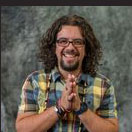
Racialized Bodies
The classroom is a microcosm of theological education. It changes and perpetuates ideas, behaviors and ideologies. But the classroom is a result and consequence of a larger scheme of structural practices and worldviews. What I have seen in these 8 years of teaching is that everything in theological education is so interconnected.
Leadership; faculty composition; faculty meetings; public policies; by-laws; conferences; worship services; syllabi and chosen pedagogies; composition of students’ races; social classes and theological backgrounds, chapels, everything composes a temporary mosaic of what and who schools are and want to be.
While patriarchalism, sexism, cultural/identity differences, and so on are so intertwined with race and the racial debate in the classroom, we cannot forget that this larger debate is also connected and revealed in the ways in which we are encouraged and encourage others to move, both metaphorically and quite literally, through theological formation, placing student and teacher alike within a narrow cultural box whose contours/gestures serve one particular/a dominant type of theological practice.
In my field, I always engage preaching and rituals/worship theologically and there is something about this “field” (worship and preaching) that seems to particularly threaten the structures of the deep-seated beliefs and fears held by our theological schools. To create liturgical practices and let the body move more freely puts the heart of the theological enterprise at risk. When worship and preaching do not follow the proper given rules of a particular denomination, if they do not keep within the one-hour (patience) limit, if they do not provide assurance of the known, the theological sense within these schools is that the core of their identity, their safety net, is in peril. In the same way, if preachers do not preach properly in the pulpit, moving their preaching pages seamlessly and keeping their sermons between 8-12 1/2 minutes, they are not good preachers. Moreover, if worship leaders/preachers do not abide with this project of identity (and race) they are considered disrespectful.
Chapels in seminaries are the lightning rod of theological differences and anger. Chapel is either derided by some professors who think that chapel is a waste of time, or overrated by other professors who think that this is the most fundamental part of theological education. The fact that chapels are often pinnacles of identity and racial power is barely addressed in discussions of race (or the other areas with which it is connected). The lack of much movement in most chapel services reflects the total lack of movement in classrooms, where syllabi perpetuate pedagogies that privilege the mind and stifle the body, favoring a cognition geared towards a European/US reasoning that excludes minorities who often think differently but are tamed and reasonably forced to adjust to what is proper knowledge. Different pedagogical exercises, the lack of artistic sources, thinking with the body, other forms of final presentations beyond final papers are just some examples.
In chapel, the body is at stake! Who gets to control it? How should it behave properly? What are bodies to do and to be in this space/place? How do we discern/envision/act the bodily presence of this holy people? Moreover, regarding sexualized bodies, color-identities, movement of the knees, hair, jewelry, how are we to measure these holy bodies? And even more, through vestments, holy seats, structures of space, tables, baptismal fonts, handling patens and cups, bread and wine/juice, standing, walking, sitting: what do these things have to do with race, patriarchy, sex and cultural differences?
Coded by specific theological language, the racialized, sexualized, gendered, culturally marked and socially classed bodies all of sudden seem to lose their many racial marks in chapel. There, it is as if the body becomes a self-referential organism, only apparently unrelated to the structures of power, the better way to perpetuate the gestures, beliefs, and racial identity of a certain group. Discussions about race in the classroom not only have to move out into the halls and offices of our schools, but must also encompass chapel as well.
Perhaps a story could help us understand it all better. Once in a class, I asked my students to come to the chancel area of our chapel. I wanted them to walk and to pray, lie down on the floor, walk on pews and feel the space, listen to the sounds and the history of the place, see what was there, what was right and wrong and how they could become good friends with the chapel space. One student couldn’t walk to the chancel and pray. She said she had never been to that area and felt very uncomfortable. We repeated the exercise; some students ventured into speaking stories they had lived, and invented others. Still, that one student couldn’t speak. Her body denied all of the codes of access to her: her color, her sexuality, her gender, her class, all made her feel unworthy of and incompetent in praying. Her unclean body and social location could not approach the socially classed, racialized holy of the holies place and utter holy words from there. It took a whole semester of classroom engagement, but with the help of the whole class, she was (eventually) able to pray there. Through her, everybody was able to see the racial markers around that space and the theologies that sustained them. Slowly, she was able to discover her own voice. Now, in spite of the racial and cultural barriers that tried to keep it from happening, she is a wonderful pastor with a church of her own. There is hope! There is always hope!
Claudio! Yes! Let’s have this conversation at McCormick! you likely have done so in class. How about with worship team?